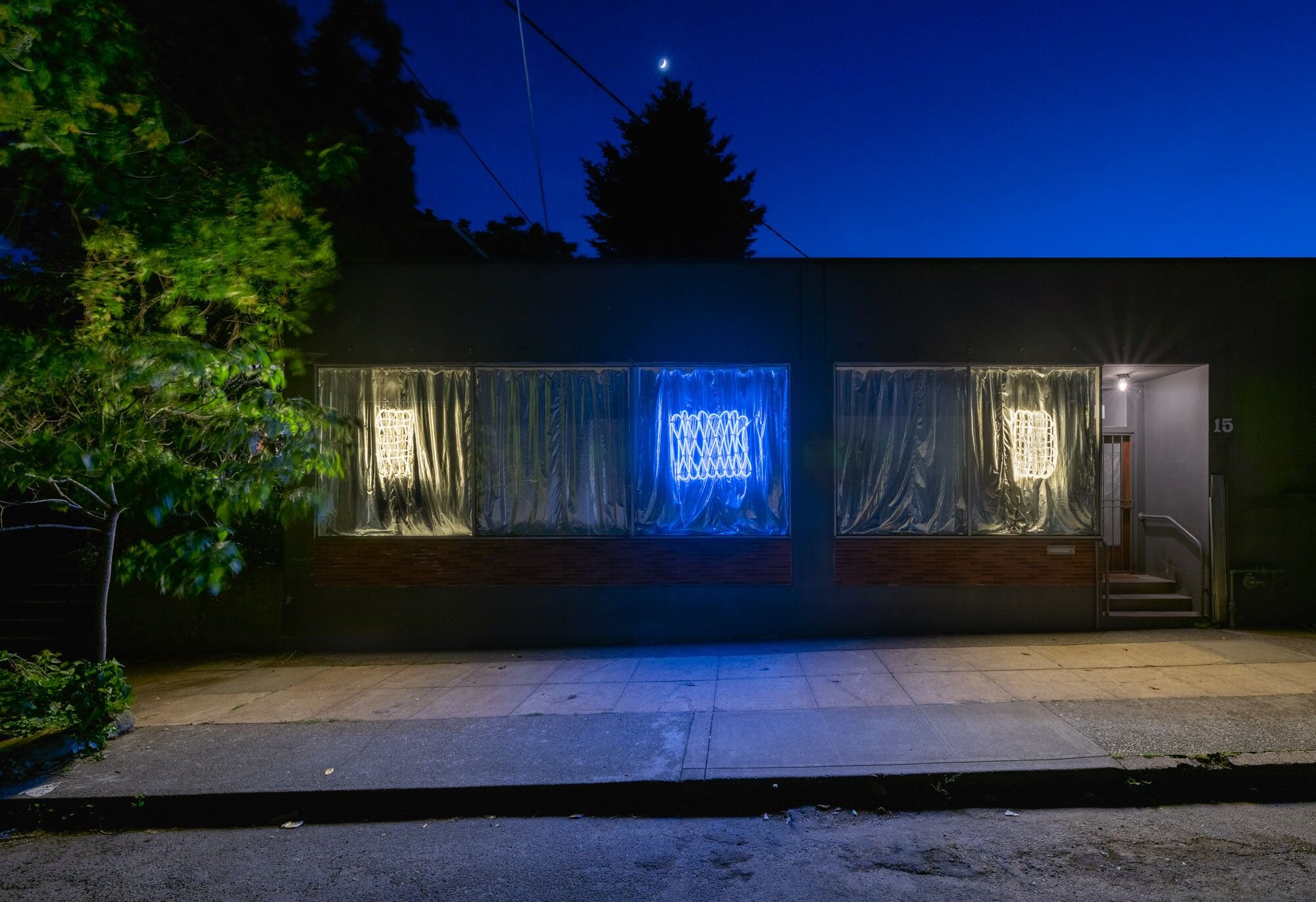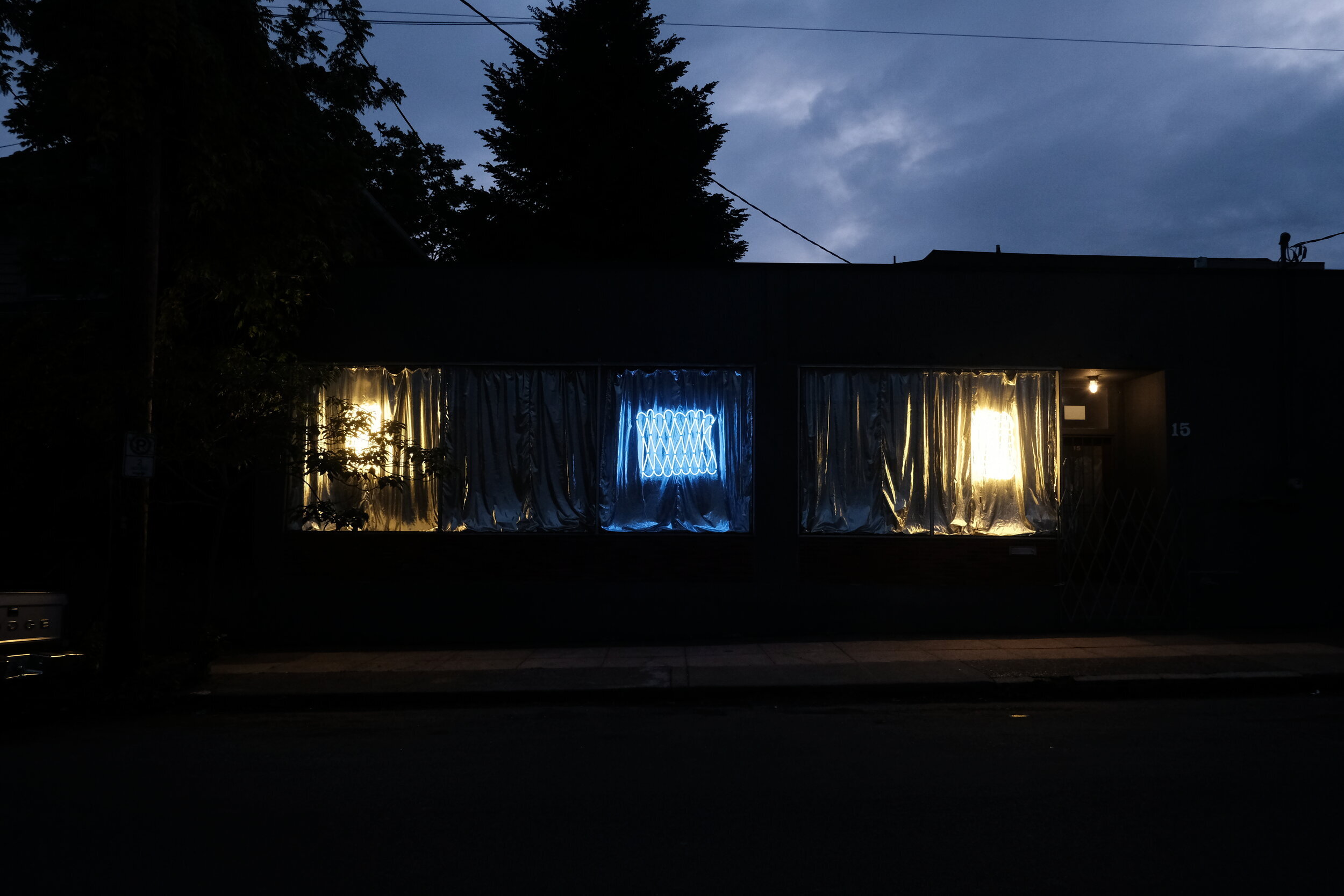FRANCESCA CAPONE // Light Journal
Amongst the painful circumstances and uncertainty keeping our city and our world sheltered in place, Francesca Capone’s most recent body of work, Light Journal, is intended to give the local community a temporary place for respite and hope. Exhibited in the windows at Nationale—which, as a non-essential business, has been closed since March 14—the show will light up for a few hours nightly starting before dusk. It is presented with an urgency and provides a warm calming glow, an invitation to be present, and a visual reprieve for passersby to see and experience at a distance.
Handling soft light conducting tubes as she would fiber, Capone’s new body of work considers luminous exposure as a salve for our disquieted and disrupted present. The window installation Light Journal presents three new works from a larger series, developed alongside a daily practice of recording fleeting and ever-changing atmospheric phenomena in writing. Adapting her text- and textile-based practice to new media, Capone gives material form to light, producing a haptic and contemplative encounter with illumination.
Waning Moon and Moon Fullness, Foggy Halo (both 2020) weave light into loose matrices whose compositions reflect the limitations of the medium: the strips of LED are pliable to a point and they are carefully enfolded within the weave to preserve their integrity. The irregular, whimsical warp and weft form a gridded network of horizontal and vertical lines; their sinuous, curved endings begin new over- and under-passes that frame the negative space within the grid. The works, when illuminated with a warm, golden glow, call attention to themselves and to shifting modulations and intensities along the light lines, but also to the spatial surround, the interstices and absences of a supporting wall, which is endowed with a new function as the site of projection—a host to the light’s haloed and shadowy reflection.
Sky Net (2020) is modelled differently, its schema echoing a fisher’s netting pattern. Variation in the net is introduced by the glow in the dark paracord which knots the thick meshing together at regular intervals. At rest, when the LED is turned off, the paracord emits most vividly, producing strings of horizontal filament across the work and glowing constellations from the dotted knotting. When the work is activated, on the other hand, it conducts pale blue light through its plastic sheathing, while the paracord now goes unremarked, other than as interruption or absence. Whether in the net or the weave, the alternation in states of being and the reversibility of line and space expand the senses and their material referent. Capone’s works encode more than light—they conduct perception toward a momentary reprieve.
—Rachel Valinsky
Francesca Capone is a visual artist, writer, and materials designer. Her work is primarily concerned with the creation of materials and a poetic consideration of their meaning. She is interested in how tactile forms simultaneously serve as functional surfaces for daily life and as a mode of communication or symbol within the cultural paradigm. Her books Woven Places (Some Other Books, 2018), Text means Tissue (2017), and Weaving Language (information as material 2018, Self Published 2015) focus on textile poetics. They are available for purchase via Printed Matter, and are available for viewing at the MoMA Library and the Watson Library at the Metropolitan Museum of Art. She has exhibited at Whitechapel Gallery in London, LUMA/Westbau in Switzerland, Textile Arts Center in NYC, and 99¢ Plus Gallery in Brooklyn. She has been an artist in residence at the Josef and Anni Albers Foundation and Andrea Zittel's A-Z West. Her academic work includes lectures and workshops at Brown University, Rhode Island School of Design, Reed College, University of Washington, and Alberta College of Art and Design, among others. She is represented by Nationale (Portland, OR).
Image © Ryan Jones
To receive a preview of the exhibition, please fill in the form below. Thank you!




